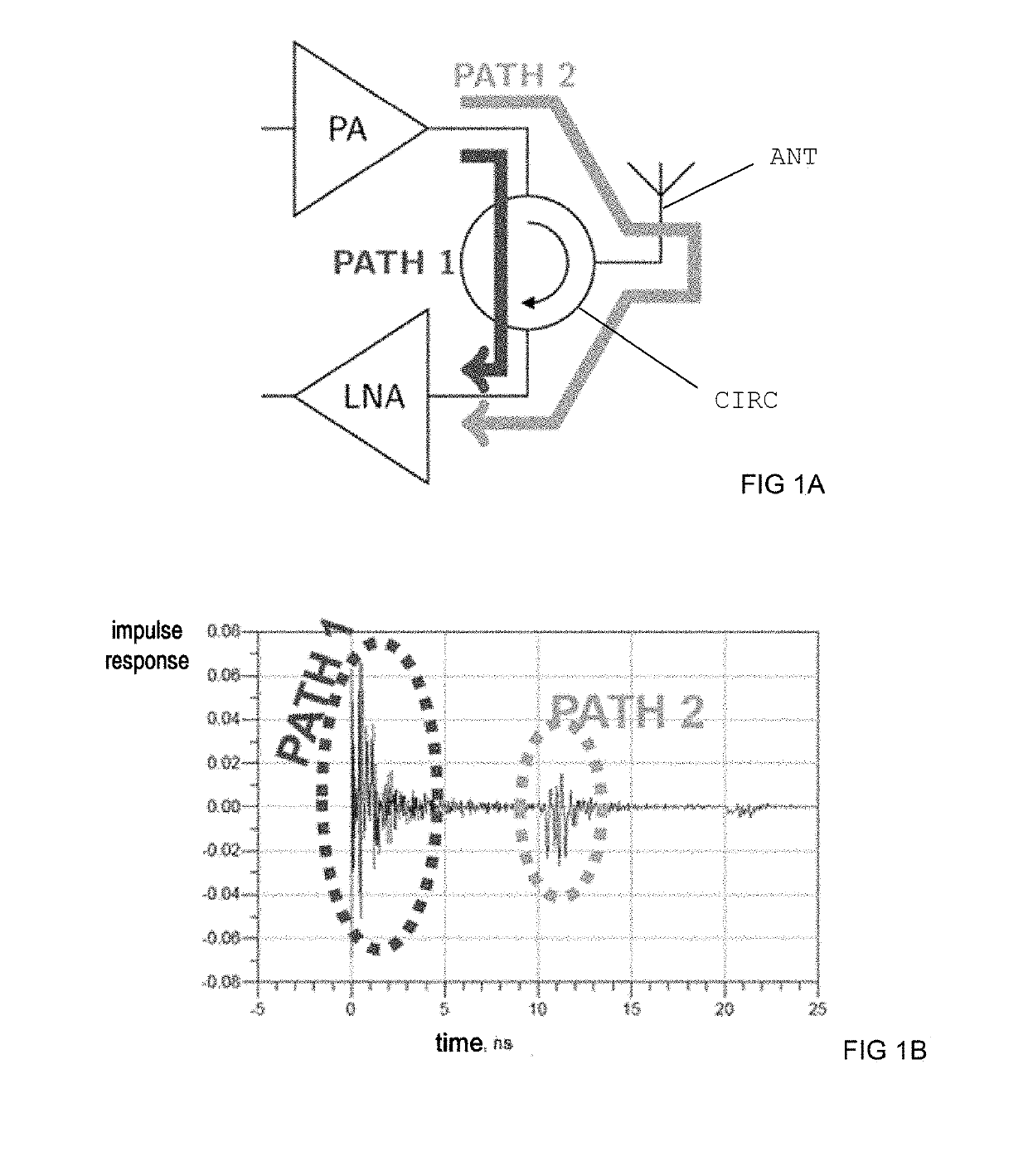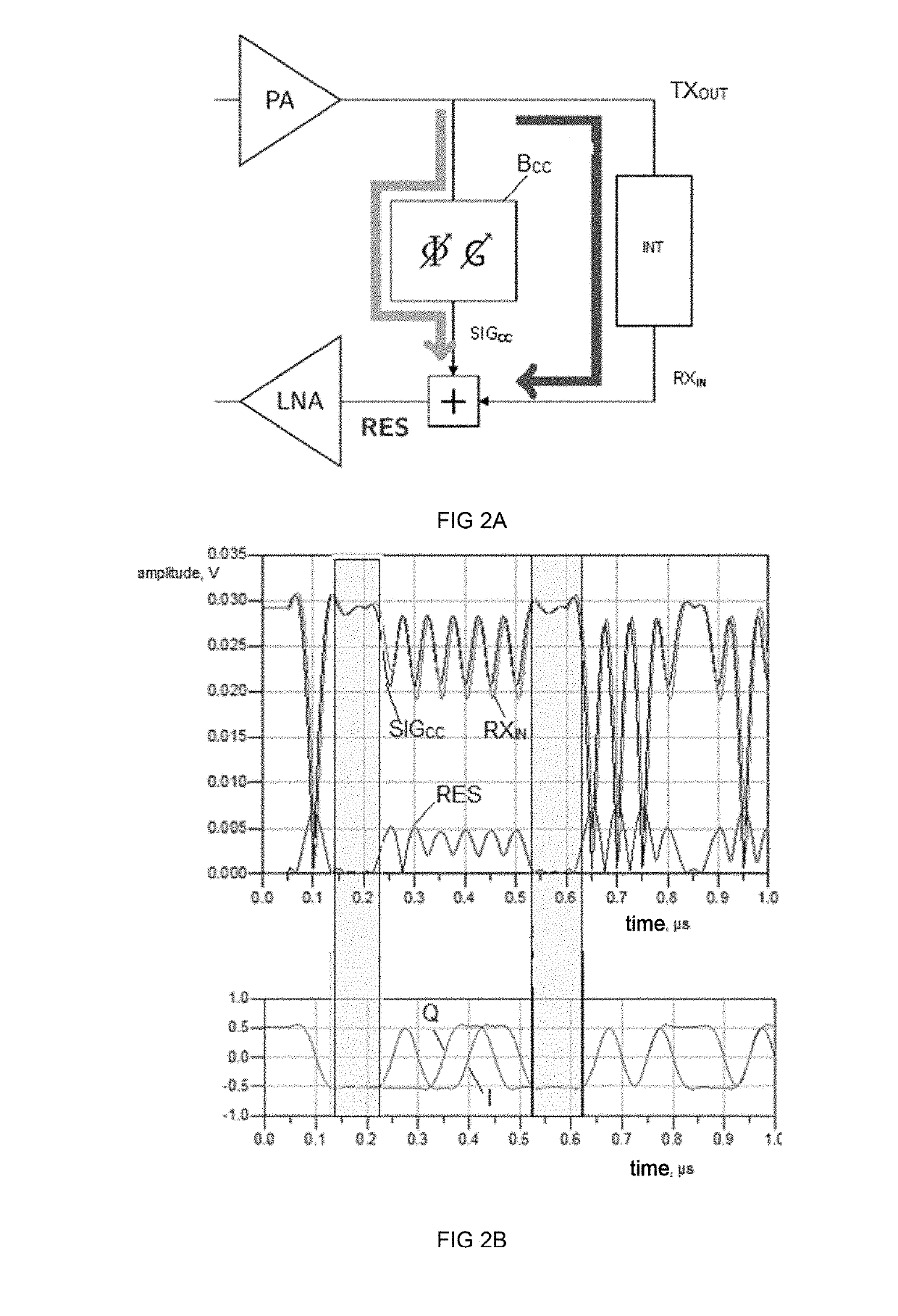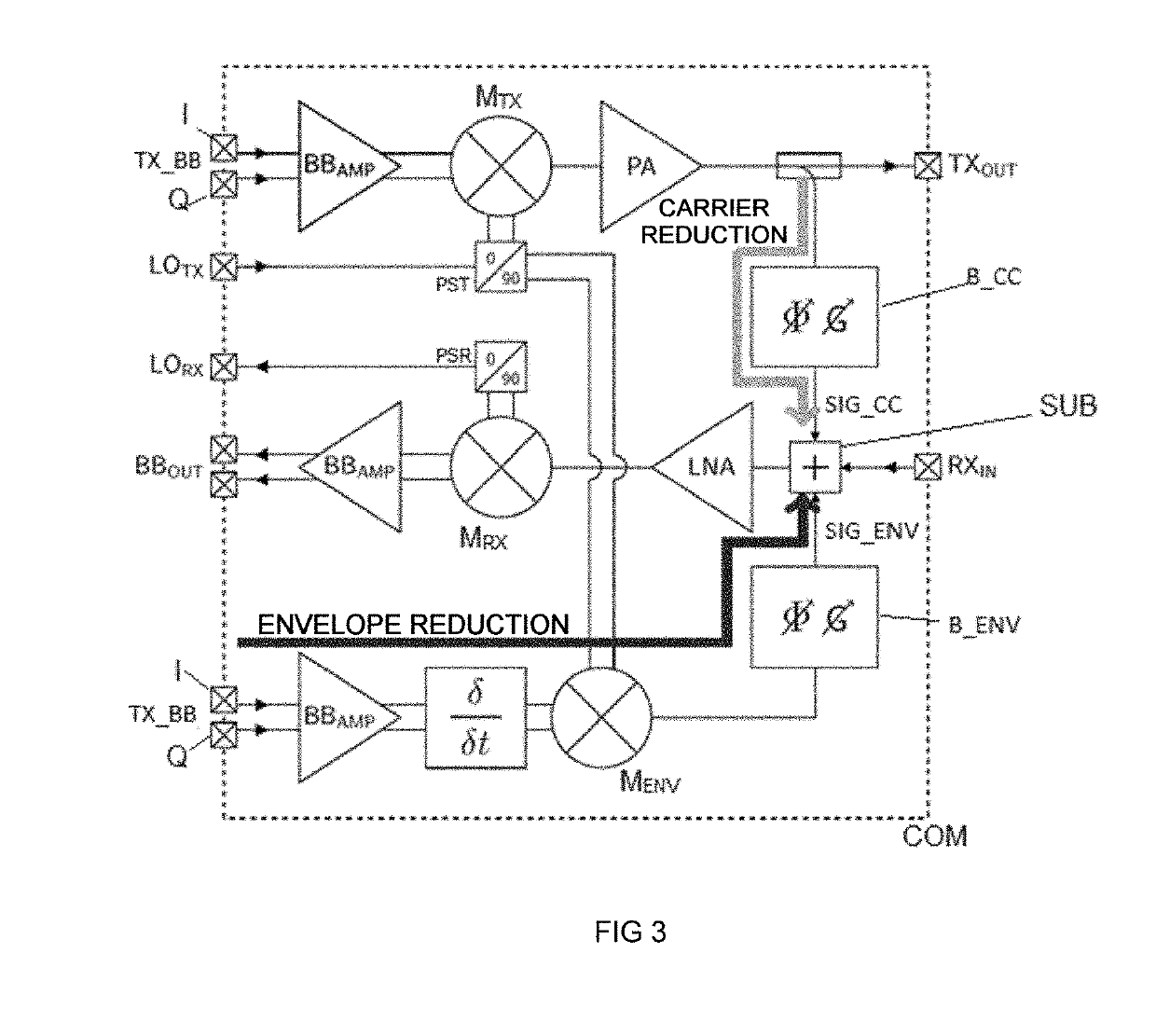Device and method for reducing the self-interference signal in a full-duplex communication system
- Summary
- Abstract
- Description
- Claims
- Application Information
AI Technical Summary
Benefits of technology
Problems solved by technology
Method used
Image
Examples
Embodiment Construction
[0042]Consider FIG. 3, which schematically illustrates an architecture of the reduction device according to the invention, of a communication device COM. A baseband transmission signal TXBB comprises a component I (phase component) and a component Q (quadrature component), which can be amplified by a baseband amplifier BBAMP. One example of signals of the components I and Q is shown at the bottom of FIG. 2B. In the case of a single-carrier modulation QPSK, each component I and Q can take two states. The component I is mixed by a mixer Mix with a transmission carrier signal LOTX, and the component Q is mixed by the mixer Mix with the same transmission carrier signal LOTX (phase-shifted by 90° by the phase-shifting module PST. The sum of these two mixed signals is then amplified by an amplifier PA, and the amplified signal, designated TXOUT, is sent to an antenna interface (not represented). The reception signal RXIN contains a self-interference contribution corresponding to the trans...
PUM
 Login to View More
Login to View More Abstract
Description
Claims
Application Information
 Login to View More
Login to View More - R&D
- Intellectual Property
- Life Sciences
- Materials
- Tech Scout
- Unparalleled Data Quality
- Higher Quality Content
- 60% Fewer Hallucinations
Browse by: Latest US Patents, China's latest patents, Technical Efficacy Thesaurus, Application Domain, Technology Topic, Popular Technical Reports.
© 2025 PatSnap. All rights reserved.Legal|Privacy policy|Modern Slavery Act Transparency Statement|Sitemap|About US| Contact US: help@patsnap.com



